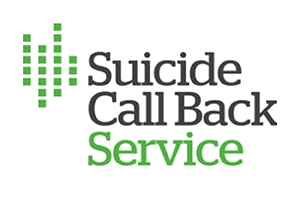- Mark as New
- Mark as Read
- Favourite
- Subscribe
- Printer Friendly Page
- Flag for Moderator
If you experience anxiety, know that you’re not alone.
It’s human to feel anxious at times, and especially during times of change and uncertainty. Levels of anxiety and stress during 2020 and the COVID-19 pandemic were found to be 3 times higher than pre-COVID-19 levels, and this was worse for the many Australians already living with an anxiety disorder.
So whether you’re dealing with more anxiety than usual, or are managing an anxiety disorder, let’s talk about some simple tools and strategies to help you cope.
1. Recognise anxiety when it comes up
Anxiety can be horrible! You often feel it in your body with a racing heart, tension, rapid breathing, and sweating. It can also affect your sleep and cause changes to your appetite and digestion. When you’re going through an anxious time it might be very hard to relax.
Notice what anxiety looks like for you. Maybe your shoulders get very tense or you find it hard to concentrate. Perhaps your thoughts become really worried and focused on the worst-case scenario. Taking note of this and naming it when it happens will help you to take action and support yourself.
2. Use your breath
Believe it or not, your breath and feelings are very connected, so you can use your breath to help reduce your anxiety. When you’re anxious and feel it in your body, check on your breathing. It might be fast or you might be holding your breath without realising.
To help bring your breathing back to normal put one hand on your stomach and one hand in the middle of your chest. Start to breathe slowly and deeply into your diaphragm, feeling your stomach expand. Then breathe out slowly, letting your stomach fall back. Do this for a few minutes. If you find it difficult, you can practice this technique lying on your back with your head, back, and legs in a comfortable position. This often makes it easier to breathe into our stomachs when we are tense.
Everyone is different so find a technique that works for you. These free mindfulness apps can guide you through a range of different breathing exercises:
3. Question scary thoughts
Anxious thoughts can be frightening. If you get caught in a loop of anxious thinking, your thoughts can convince you that the world is ending, or that you’re dying, or that you will never succeed at anything in life (they can also be pretty mean, right?).
When you notice these thoughts try writing them down. Take a breath, read over them again, and think about how realistic they are. Is it really true that you’ll never succeed at anything? What about last week when someone gave you good feedback about something you did? You get the idea.
Challenging anxious thoughts isn’t always easy, but with practice, it can help break an anxious thought cycle.
4. Postpone scary thoughts (you read right!)
If anxious thoughts are getting in the way of your day, try setting aside a ‘worry time’ each day. Try and make it the same time each day for the same length of time, and in the same place. For example, 6pm, at the kitchen table, for 20 minutes.
If you notice anxious thoughts during the day, note them down on a piece of paper or on your phone. Say to yourself: “I’m busy now, so I’m going to worry about that during my worry time”. Then go back to what you were doing or focus on something enjoyable for you.
When you come to your worry time, take out your worry list and see what is still bothering you. Notice if some worries are no longer relevant. Get started worrying in your head or on paper, whatever feels right. When you reach the end of your worry time, it’s important you stop. Anything that is still bothering you can carry over to tomorrow’s worry time.
5. Exercise
Again, that mind and body connection! Exercise is great for long-term mental health. It can also help in the short-term. While it might be the last thing you feel like doing – taking time to do some push-ups, go for a walk, or have a dance can make a huge difference to your anxiety in the moment.
6. Get support
These tips may help in your day-to-day life, but it’s important to remember that you don’t have to manage anxiety symptoms or disorders completely on your own. If your anxiety is getting in the way of what’s important to you or causing you too much distress it’s important you tell someone you trust. To get extra professional support, talk to your GP about the changes you've noticed in yourself.
Now we want to hear from you! What is your go-to strategy that helps with your anxiety? Share your tools and strategies in the comments so we can learn from each other.
If you’re new to the forums, we’d love to hear your thoughts or questions. Register for the forums here to start connecting with our super supportive community.
You must be a registered user to add a comment. If you've already registered, sign in. Otherwise, register and sign in.














